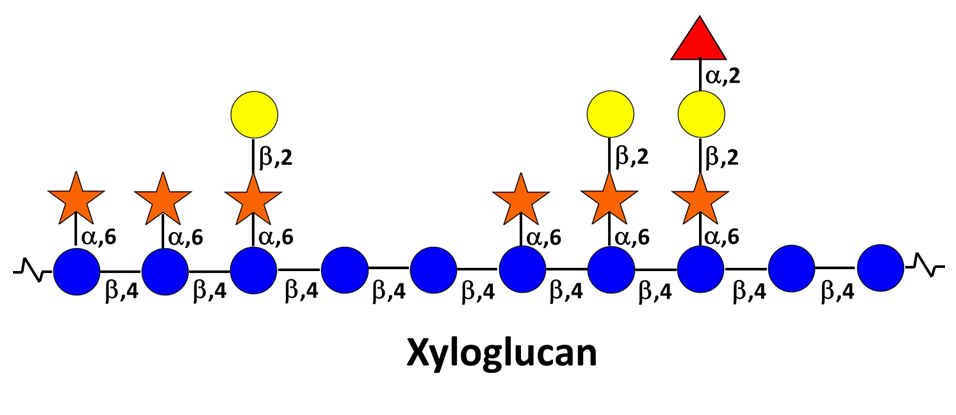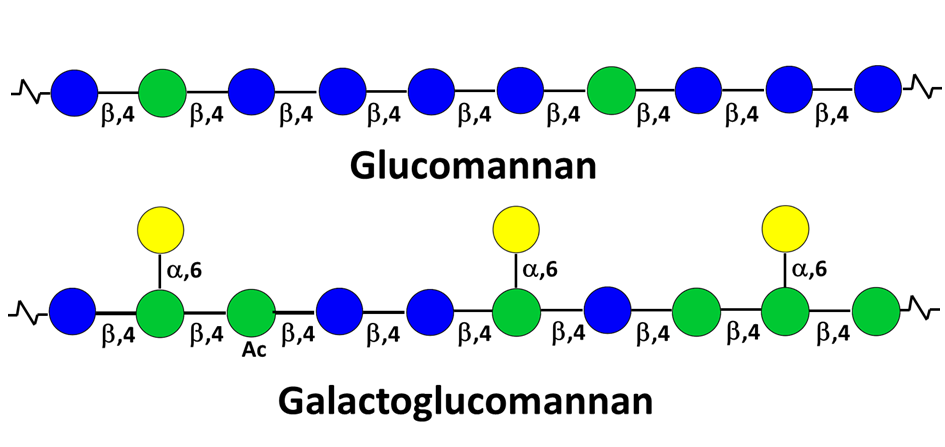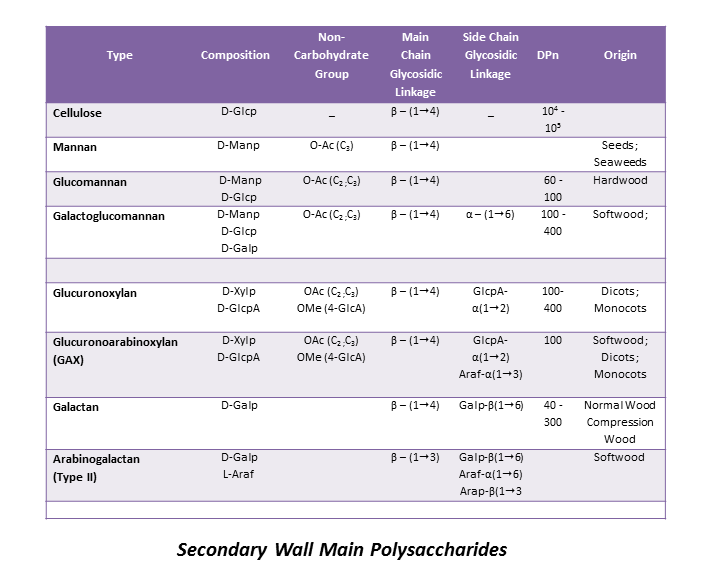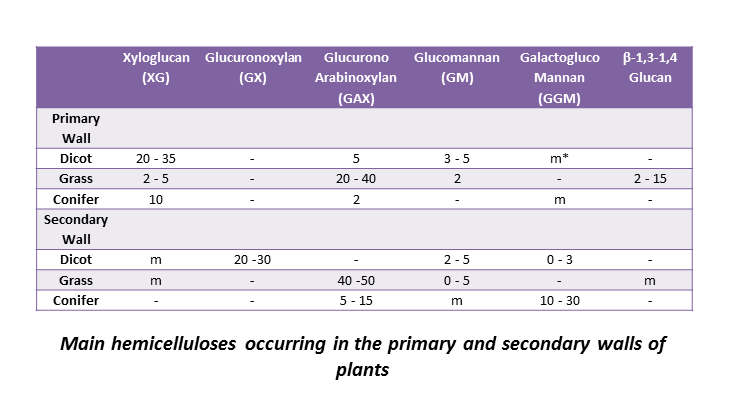The thick secondary walls are laid down only after the cambial cells have stopped enlarging. They have a layered structure in which the layers are conventionally denoted S1, S2, etc., in the order in which they are laid down. harris 2006 Some cell types, such as parenchyma cells of the cotyledons and the endosperms of seeds have a non-lignified secondary wall. However, most of the secondary walls of higher plants are lignified. These are essential for the supportive and conductive function of tissues. Secondary walls are mainly found in tracheary elements (tracheids in seedless vascular plants and gymnosperms, and vessels in angiosperms) and fibers in the primary xylem and the secondary xylem (wood).
To the difference of primary walls, secondary walls do not contain pectic polysaccharides. The predominant non-cellulosic polysaccharides belong to three families of hemicelluloses, namely, heteroxylans, glucomannans and galactoglucomannans. Xyloglucan has been detected in dicots and grasses secondary walls, but only in very minor proportion.
Xyloglucan (XG)
Fucosylated xyloglucan was demonstrated, via the activity of the xyloglucan-specific enzyme xyloglucan endotransglycosidase (XET) and XG visualization immunolabeling, in poplar bourquin et al 2002> suggesting that XG may be considered to play a role in fully differentiated secondary walls and in developing wood.

Glucuronoxylan (GX)
GXs are one of the major hemicelluloses in the secondary walls of dicots in which they account for 15-30%. Single α-(1,2)-linked D-glucuronic acid and 4-O-methyl- D-glucuronic acid residues are attached on average every 10 xylosyl residue to the β-(1-4)-D-xylopyranose backbone. In the native state GXs are often acetylated at C-2 or C-3, containing between 3-13% acetyl group.

Arabino-glucuronoxylan (AGX) & glucurono-arabinoxylan (GAX)
They are two variants of xylans differing in the relative proportions of the single substituents of 4-O-methyl-α- D-glucuronic acid and α-L-arabinofuranose residues attached at position 2 and 3, respectively, to the β-(1-4)-D-xylopyranose backbone. AGX are found in dicots secondary wall but are typically present in the cell walls of lignified supporting tissues of gymnosperms in which they constitute a significant proportion of the hemicelluloses together with the galactoglucomannans. They are highly substituted by 4-O-Me GlcA , with one glucuronic acid every 5-6 xylose residues. The GAX found in secondary cell walls of monocotyledons has fewer side-chains than the GAX of primary cell walls. This is thought to result in a stronger GAX-cellulose interaction. vogel 2008
Glucomannan (GM) and Galactoglucomannan (GGM)
Both these hemicelluloses are built on a backbone alternating short sequences (3-5) of β-(1-4)-linked D-mannopyranosyl interspaced by single β-(1-4)-D-glucopyranosyl residues. GMs are more typical of dicots secondary walls where they account for only a few percent. They are also present in coniferous tracheids, possibly with a minor amount of α (1-6)-D-galactopyranose substituents. On the other hand, GGMs are characteristic components of gymnosperm secondary walls in which they are often the major matrix polysaccharide (≥30%) beside GAXs. Glucose, galactose and mannose occur typically in coniferous species in the average ratio of 1:1:3, respectively, with some variations having higher proportions of mannose. dutton joseleau 1977 lundqvist et al 2002> Here again, the mannosyl residues may be acetylated.



